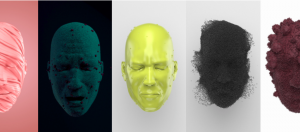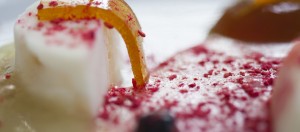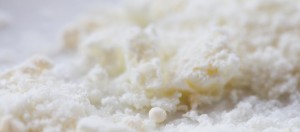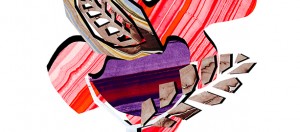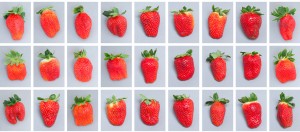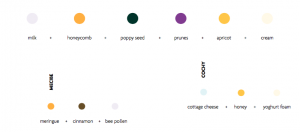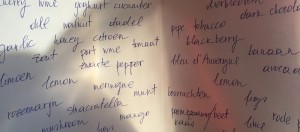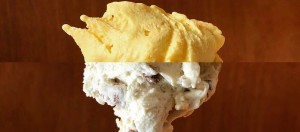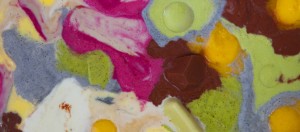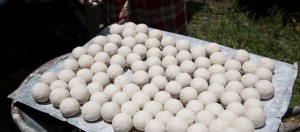
Often, we are asked about the difference between ice cream prepared with liquid nitrogen and ice cream prepared in the more traditional way with an ice cream machine. On our menu at our Headquarters, we have a new Planet which illustrates this difference very well. We will use it as a case study to elaborate on both techniques and clarify some of the pros and cons of the two methods of ice cream making.
Let’s start with our new planet called Always which is made with liquid nitrogen. The thing that makes it so special is the fact that it is completely made without sugar. We used freshly squeezed pineapple and parsley juice as a base for the sorbet, added a bit of vegetable fiber, which also works as a probiotic, and churned it using liquid nitrogen. In addition to the sorbet base, Always also includes roasted pineapple, coconut flakes and millet with a few drops of basil and maple syrup on top. The coconut flakes provide bits of fat, millet adds some fiber, basil is added for freshness and the drops of maple syrup emphasise the woody and roasted aromas. All together these ingredients create a well balanced bowl of frozen pleasure with no need for extra sugar; the pineapple flavour is so rich that additional sugar would hide some of the more gentle aromas. This result can only be achieved with liquid nitrogen. The temperature of -196 °C is so cold that it can freeze without the additional structure that is normally provided by sugar in the traditional method. The natural sugars present in the fruit are enough to achieve the smooth and creamy texture to create ice cream.
That brings us to the role of sugar in ice cream. Everybody knows that it provides sweetness, but perhaps more importantly, it is also a structural compound and an anti-freezing agent. As a structural compound it creates body and as anti-freezing agent, sugar allows ice cream to be soft at sub-zero temperatures. It is simply impossible to make sugar-free ice cream using the traditional techniques. If you remove all the sugars from the recipe, you will need to substitute it with something else. Other carbohydrates that are less sweet can take away the sweetness but they are still carbohydrates. Protein or fat can also substitute some of the sugars but it will not provide the same texture and smooth mouthfeel. Starch combined with sweeteners are often used to substitute the sugars in the recipe and to give the ice cream its body, but mostly these starches and modifiers have little or no health benefits over sugar and still contain a certain amount of calories. So, sugar is indispensable!
There is also a difference in the texture that results from working with liquid nitrogen and traditional methods. The rapid freezing process of liquid nitrogen minimises the formation of ice crystals and provides a smooth, silky and velvet texture that is generally not associated with ice cream. With traditional ice cream making, the process of freezing is slower which allows ice crystals to grow however good your recipe or ice cream machine is. The ice crystals are very small when the ice cream is well balanced and treated the right way, and bigger when the ice cream was made the improper way.
The presence of ice crystals belongs to ice cream; we know the feeling, we recognise the mouthfeel and connect our memories with the sensation. Ice cream prepared with liquid nitrogen confronts us with the absence of ice crystals which can be slightly disorienting, but exciting at the same time. This new sensorial experience talks to a different set of emotions, creating a new experience rather than evoking old memories. In combination with a variety of ingredients, which is limitless when working at -196 °C, ice cream made with liquid nitrogen can create remarkable sensations that are very different from traditional ice cream. At the same time, the comfort of the familiar and connections to the past can be truly satisfying so that’s when good old gelato can be a real treat.
The bottom line is that both techniques are great to have at the hand. When we develop our flavours, we think about the experiences and effects that we want to create and decide on the most suitable technique to achieve them. Working with both techniques offers us an extensive toolbox to build better experiences for our visitors, surprising them with a wide range of possibilities!
